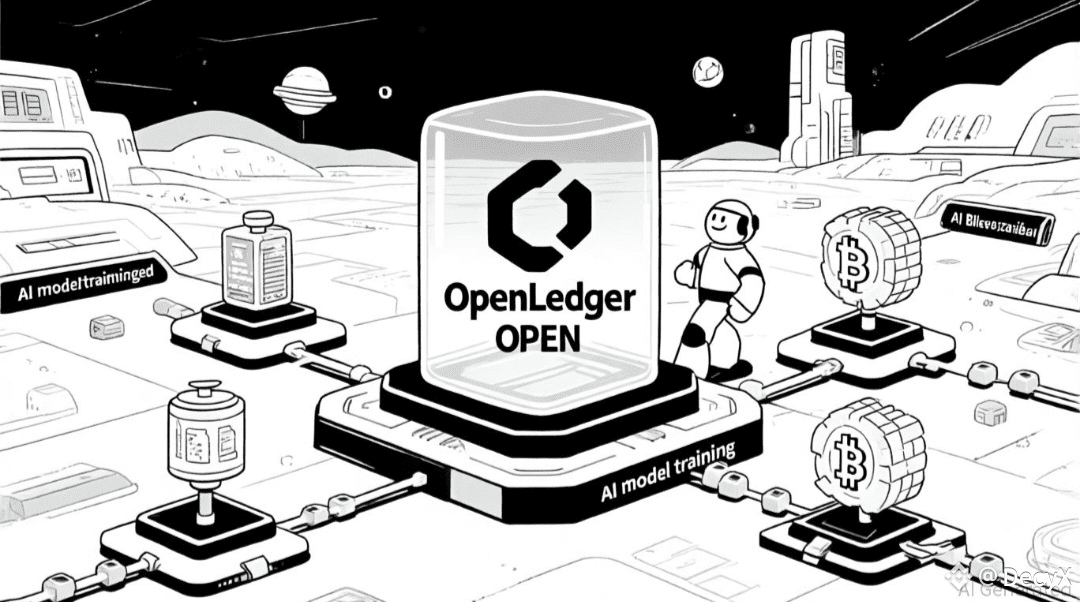OpenLedger positions itself at the intersection of two of the most transformative technologies today-artificial intelligence and blockchain. Rather than treating these as separate silos, it intends to fuse them into a single, symbiotic infrastructure where data, models, and agents are not only built but also monetized in a transparent and decentralized way. It’s a vision where AI contributions don’t vanish behind closed doors-they’re visible, credited, and rewarded.
Core Philosophy
At its heart, OpenLedger champions Payable AI. The idea is simple: every time data or a model leads to measurable value, those who contributed should benefit. In traditional AI systems, datasets, training, and inferences are often hidden in corporate silos. OpenLedger aims to break that model. It brings Proof of Attribution—a mechanism that ties every output back to its building blocks. Whether you uploaded raw data, curated a dataset, or tuned a model, your role is recorded on-chain and can be rewarded whenever your contribution is used.
Datanets and Data Infrastructure
Central to OpenLedger’s design are Datanets-domain-specific, community-governed data networks. Think of a Datanet as a living repository for data related to, say, legal documents, medical imaging, or IoT sensor logs. Contributors submit curated data, validators check quality, and models built atop these Datanets inherit greater trust and relevance. This setup combats the AI industry’s chronic challenges of poor data quality, opacity, and lack of alignment between data owners and model beneficiaries.
Model Building, Deployment & Inference
OpenLedger doesn’t stop at data. It provides a suite of tools that let creators build, deploy, and monetize models in a decentralized way. Tools like ModelFactory offer a no-code (or low-code) interface to design specialized models. OpenLoRA handles efficient inference, letting multiple lightweight models run on limited hardware without sacrificing performance. When a model is queried or used, attribution is linked back to the precise data contributions, so the reward flows appropriately. That means AI doesn’t just act-it pays.
Tokenomics and Utility of OPEN
The OPEN token is the lifeblood of the OpenLedger ecosystem. It’s used for governance, staking, paying for AI services, and distributing rewards to contributors based on attribution. The token not only fuels on-chain operations but also aligns incentives across data providers, model developers, validators, and consumers. Because every AI interaction can trace its lineage, OPEN becomes not just a utility token-but a reflection of real value created across the network.
Technology Stack and Scalability
OpenLedger is built as an Ethereum-compatible Layer 2, leveraging the OP stack and EigenDA for scalable data availability and cost-effective on-chain storage. Transactions and attributions settle on Ethereum’s security, while computation and model logic reside in the scalable layer above. This architecture enables the platform to support high-throughput AI workloads without the prohibitive gas costs of using a base layer directly.
Ecosystem Growth and Strategic Partners
Backed by notable investors like Polychain, Borderless Capital, and HashKey Capital, OpenLedger has gained momentum rapidly. Its token, OPEN, trades publicly and has already seen significant market activity. The platform is actively rolling out its testnet and leveraging community participation through node operation, data contribution, and governance.
Strengths & Differentiators
What sets OpenLedger apart is its holistic integration of AI and blockchain. Many projects focus on data marketplaces or AI tooling alone; OpenLedger unifies the full lifecycle-from data to model to inference-within one protocol. Its emphasis on attribution ensures that all contributors are visible and rewarded. The use of Datanets also creates domain-specific trust layers, improving model relevance and user confidence.
Challenges & Risks
Of course, ambitious designs face hurdles. Attribution is notoriously difficult-measuring precisely how much a data point or model tweak contributed to an outcome is complex. Ensuring robustness against malicious contributions or data poisoning is critical. Scalability must keep pace with AI workloads, and the layer above must remain efficient. Finally, achieving broad adoption-getting enterprises, researchers, and developers to shift from incumbent AI stacks to this new paradigm-will require strong user experience and compelling value.
Outlook
If OpenLedger succeeds, it can unlock a new era in AI economics. Data, often under-monetized and siloed today, can become a vibrant contributor-driven market. Models will no longer be opaque black boxes controlled by a few entities. Imagine AI agents and apps that transparently pay for their data and computational building blocks. That shifts much of the power back to creators, researchers, and communities.
In essence, OpenLedger doesn’t just propose a better blockchain or a smarter AI framework. It proposes a new economic model for intelligence. As AI becomes more central to society, aligning incentives across all players becomes not just wishful thinking-but a necessity. OpenLedger’s path is ambitious, its design bold, and its promise, if fulfilled, truly paradigm shifting.
